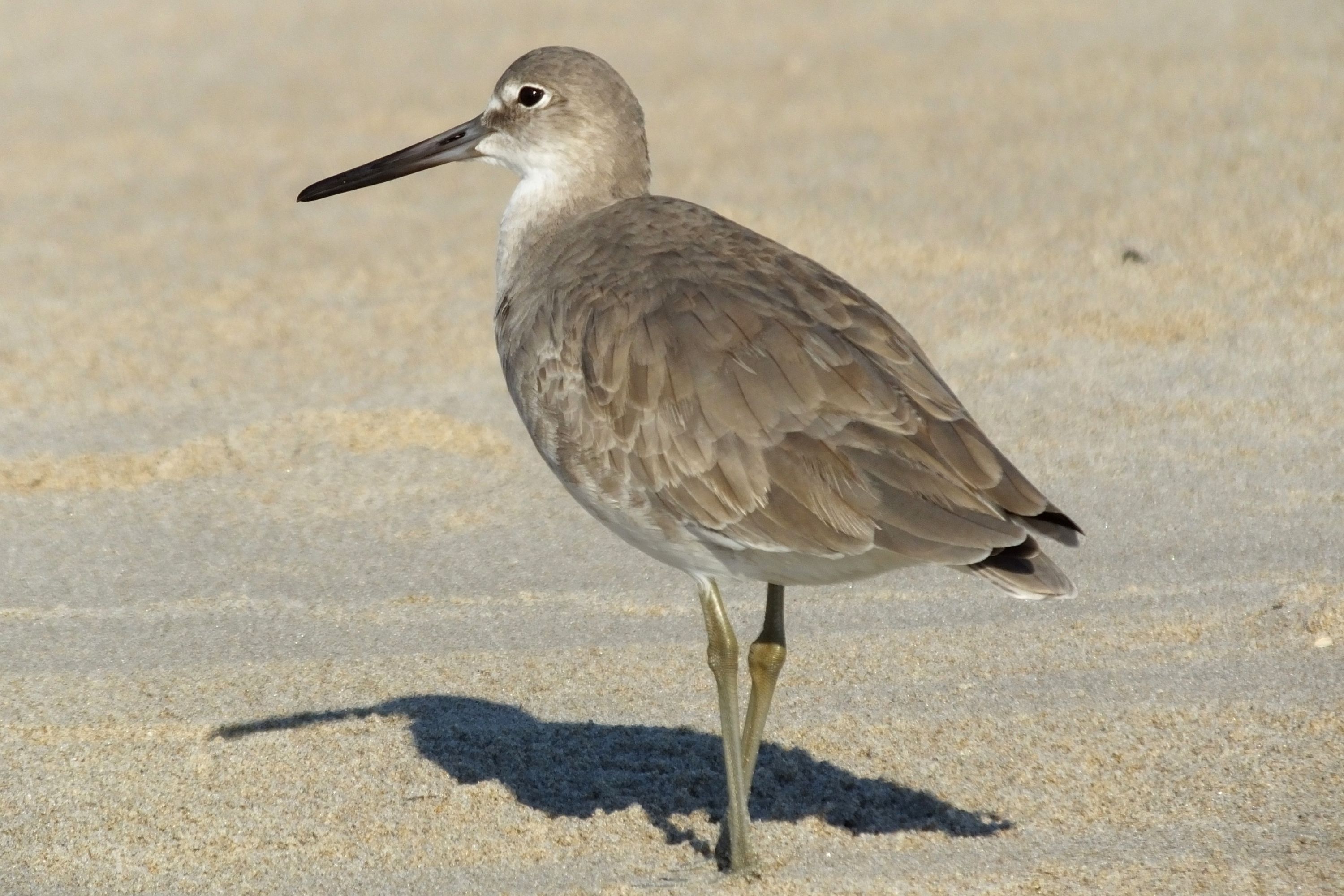Willet
(Tringa semipalmata)

Description
The willet (Tringa semipalmata), formerly in the monotypic genus Catoptrophorus as Catoptrophorus semipalmatus, is a large shorebird in the family Scolopacidae. It is a relatively large and robust sandpiper, and is the largest of the species called "shanks" in the genus Tringa. Its closest relative is the lesser yellowlegs, a much smaller bird with a very different appearance apart from the fine, clear, and dense pattern of the neck, which both species show in breeding plumage. It breeds in North America and the West Indies and winters in southern North America, Central America, the West Indies and South America. The willet is an inelegant and heavily built shorebird with a structure similar to that of the common redshank but being larger in size than the greater yellowlegs while resembling a godwit in flight with black primary coverts and primaries contrasting with a broad white band, white secondaries with a white rump and gray tail band. With its reclassification into the Tringa genus, it stands as the largest species in this prominent sandpiper family. The black underwing coverts may be conspicuous in flight. Willets are identified on the ground by their gray legs and shortish, heavy but straight bill. The plumage is gray above with a white rump, and white below with a distinct white area above the lores and a narrow whitish eye ring giving the bird a spectacled appearance. The underparts are white. In breeding plumage the bird shows brown barring on the upperparts. Non-breeding birds are plainer. Length: 13.0-16.1 in (33-41 cm) Weight: 7.0-11.6 oz (200-330 g) Wingspan: 27.6 in (70 cm) The willet's name is onomatopoeic and refers to its loud piercing "pill-will-willet" territorial song, which is higher pitched and repeated at a faster rate in Eastern willets than in Western birds. Other calls include a predator response call given by breeding birds which is a repeated, staccato "kleep", while non breeding birds alarms include a high, pitched anxious "kip-kip-viek" call and a "kreei" call. They also have a distinctive call when crossing another willet's territory and this "klay-dir" call is also used as a contact call when willets are migrating. Two subspecies (which may actually be different species) have very different breeding habitats. The eastern willet breeds in coastal saltmarshes while the western willet breeds in freshwater prairie marshes, sloughs, potholes and other inland wetlands.
Taxonomic tree:







